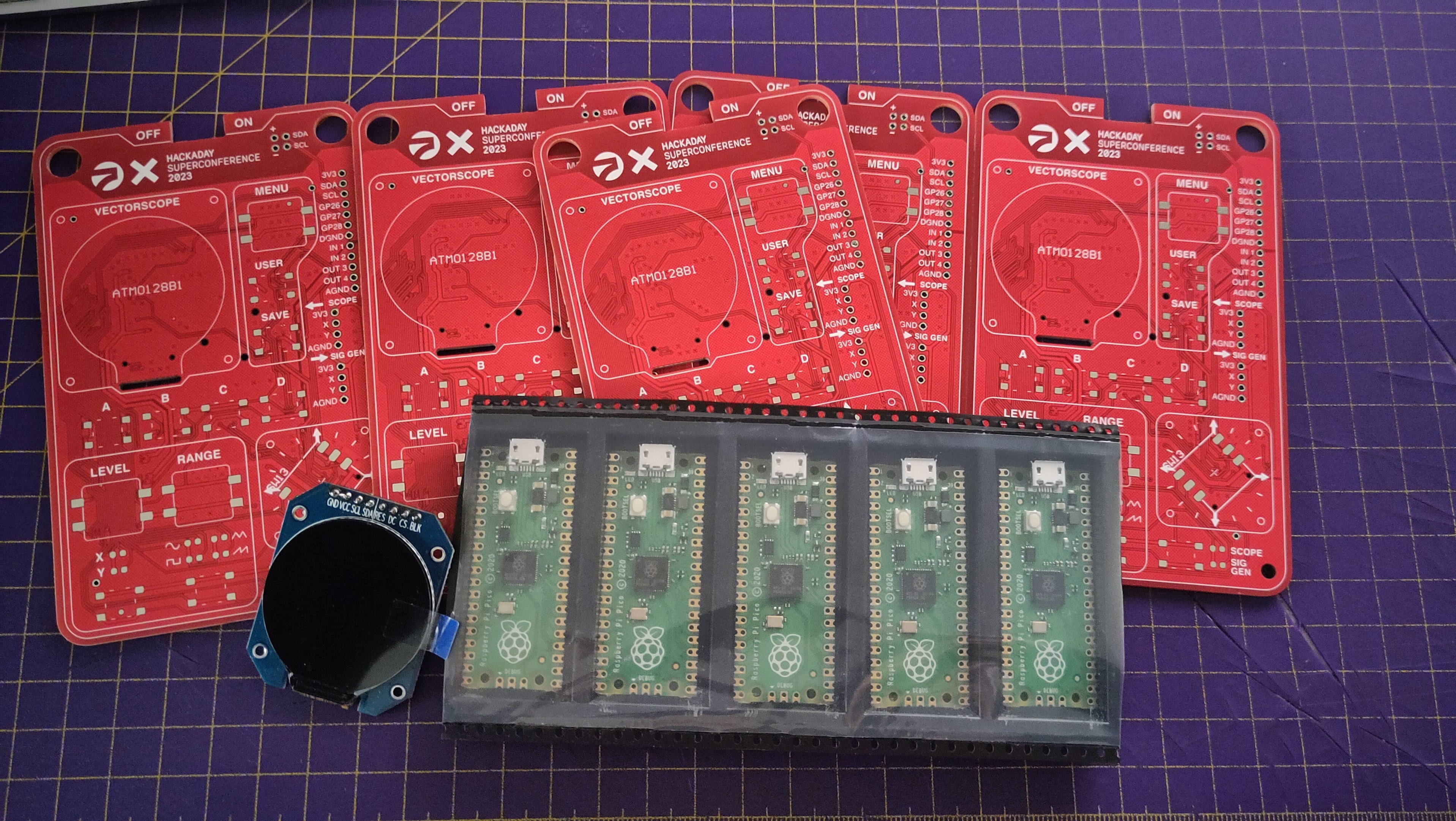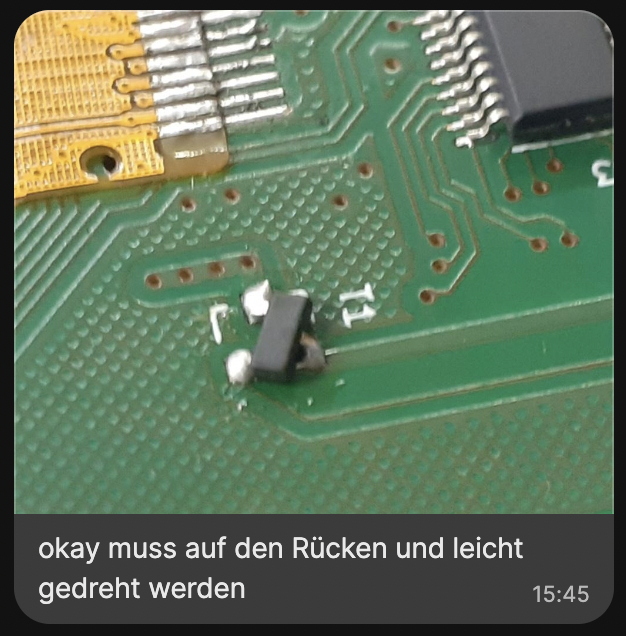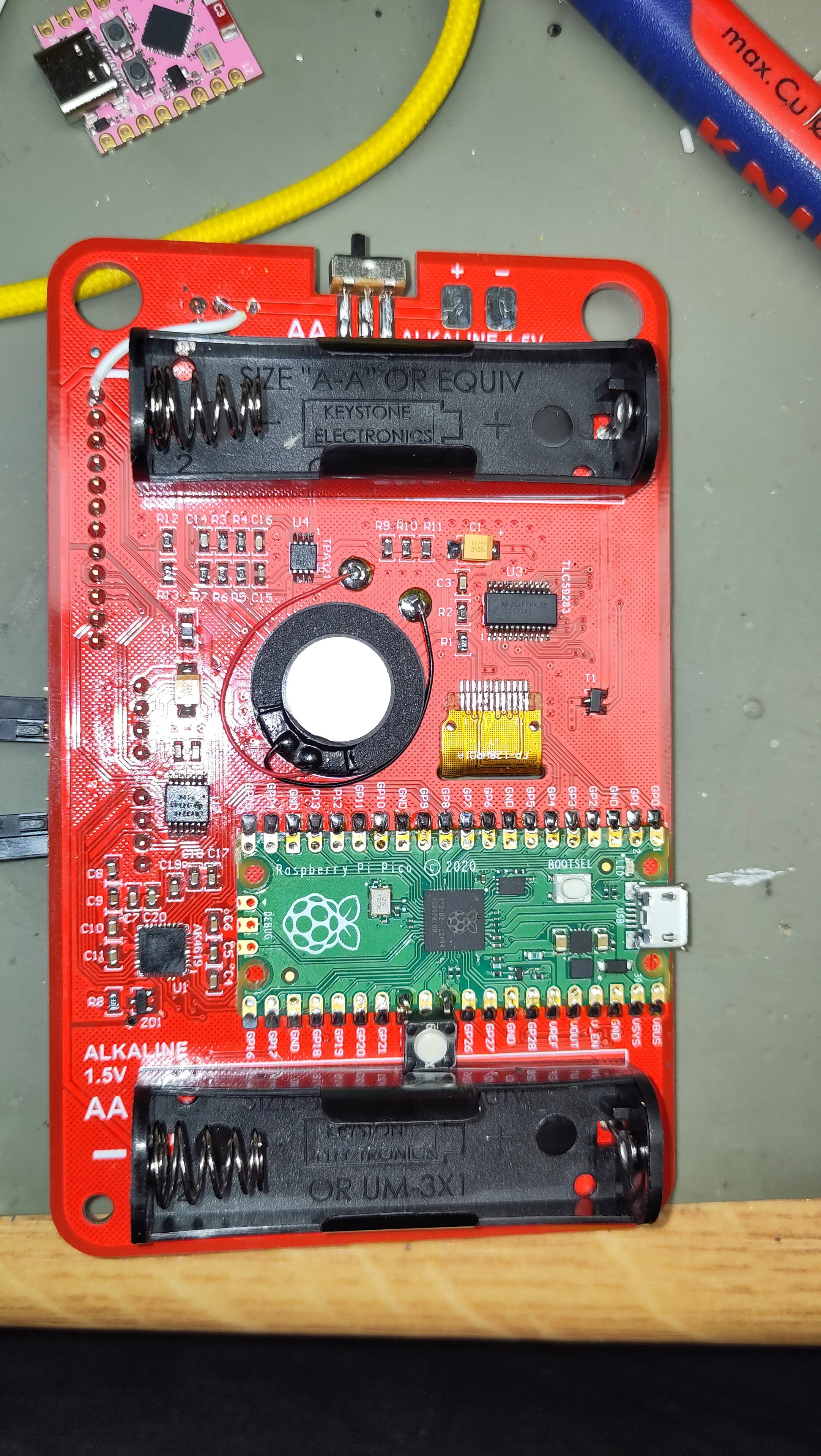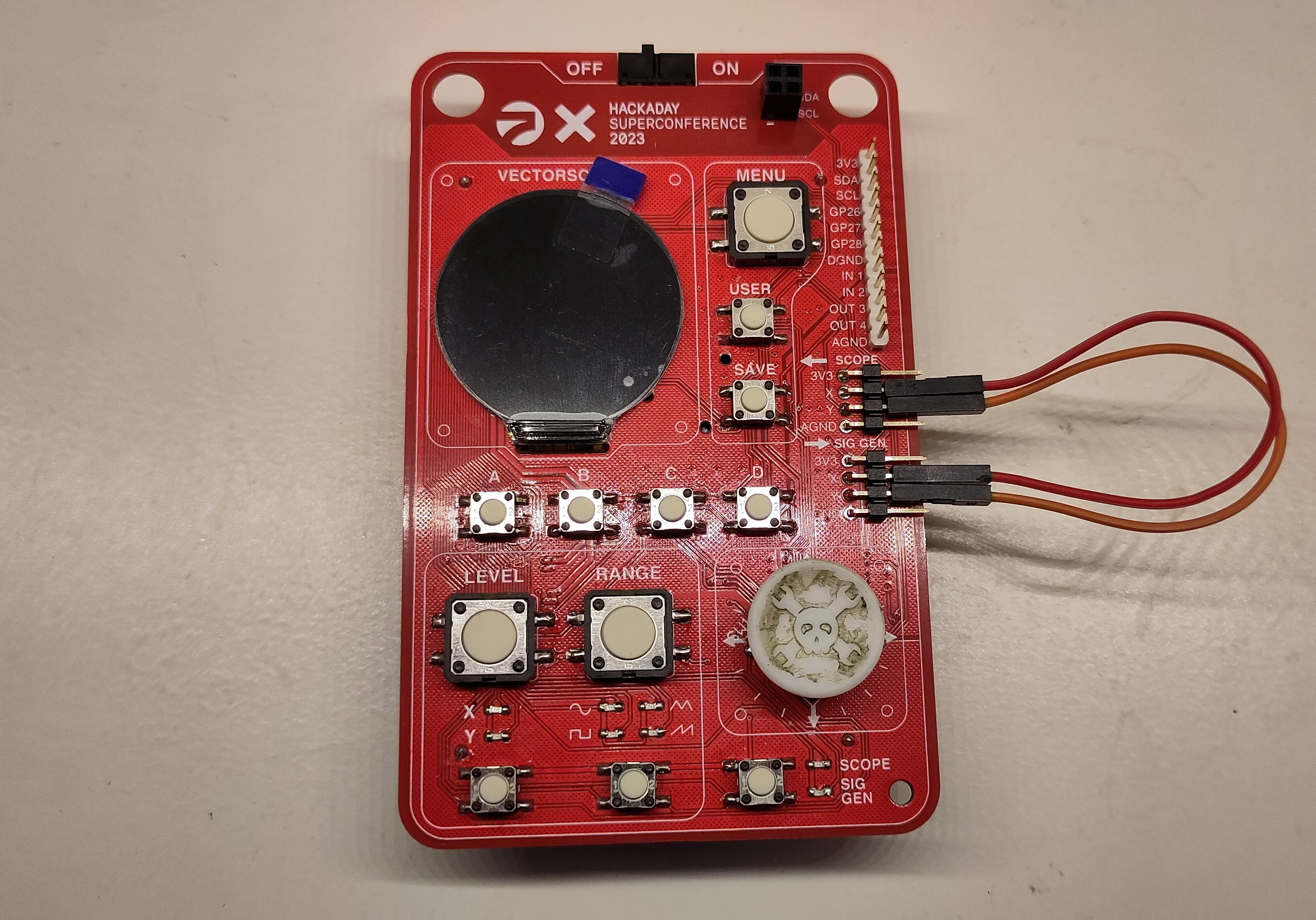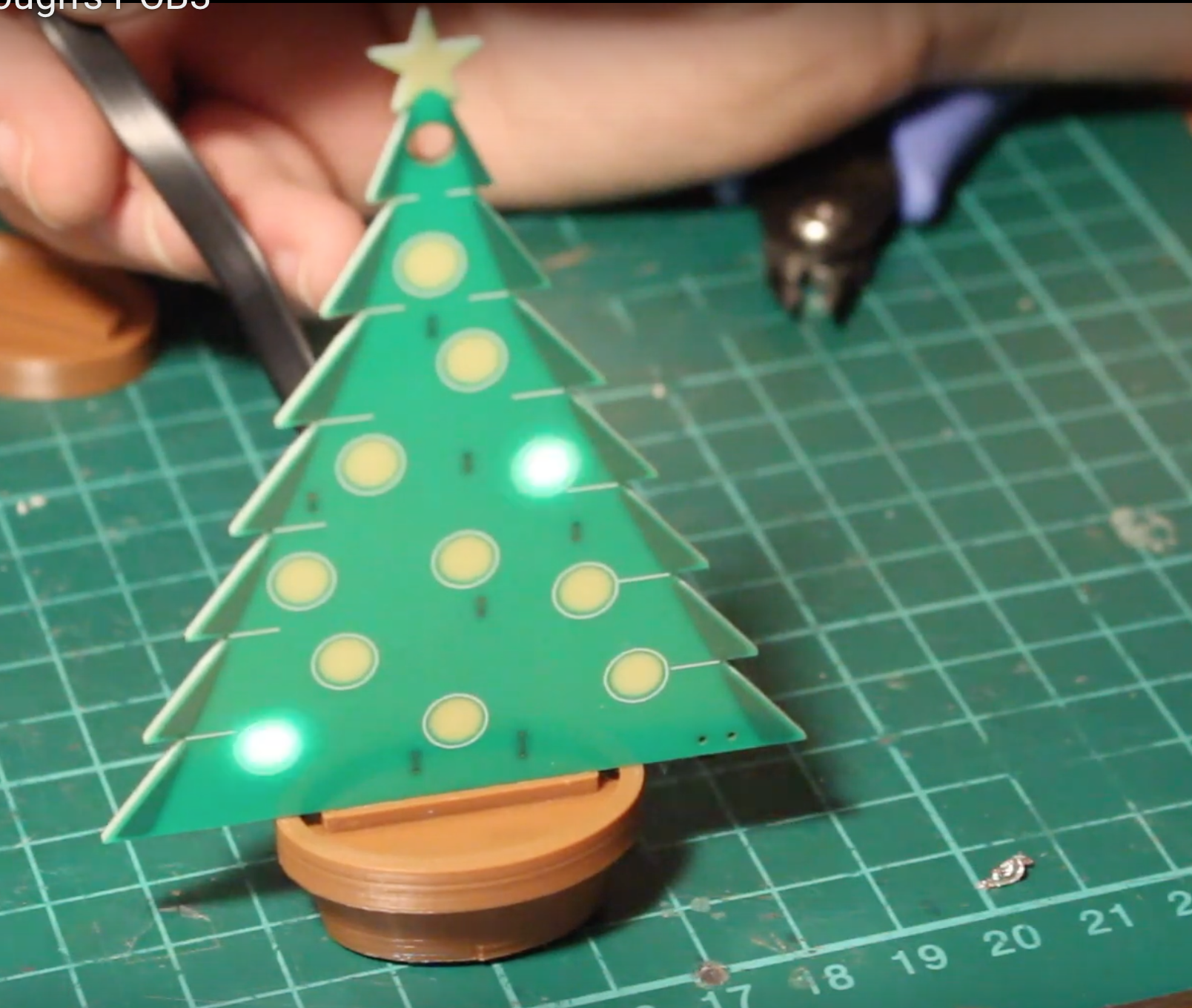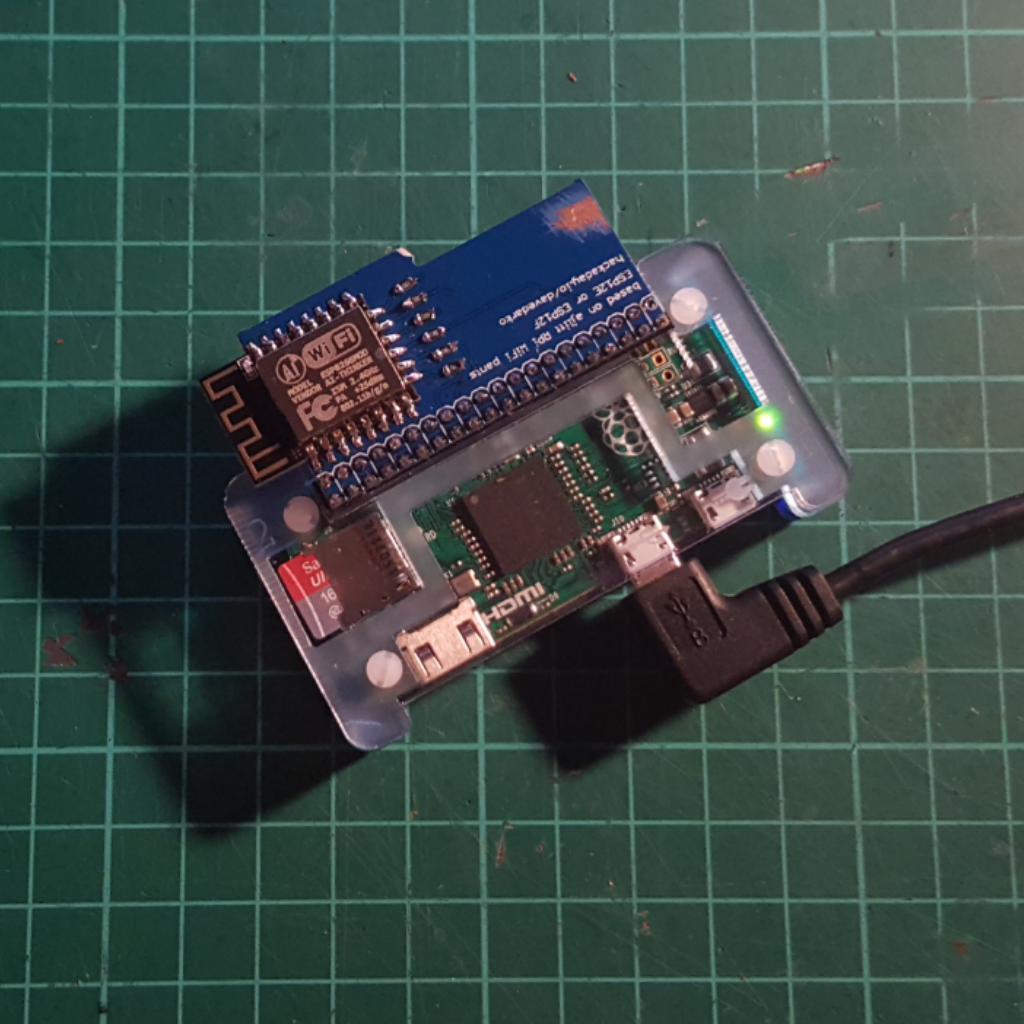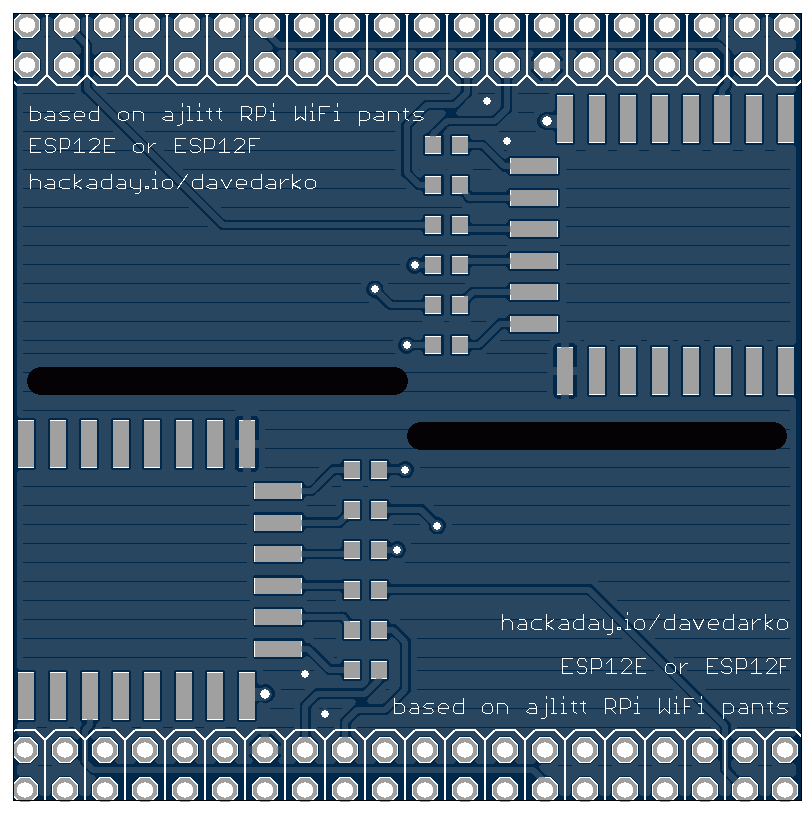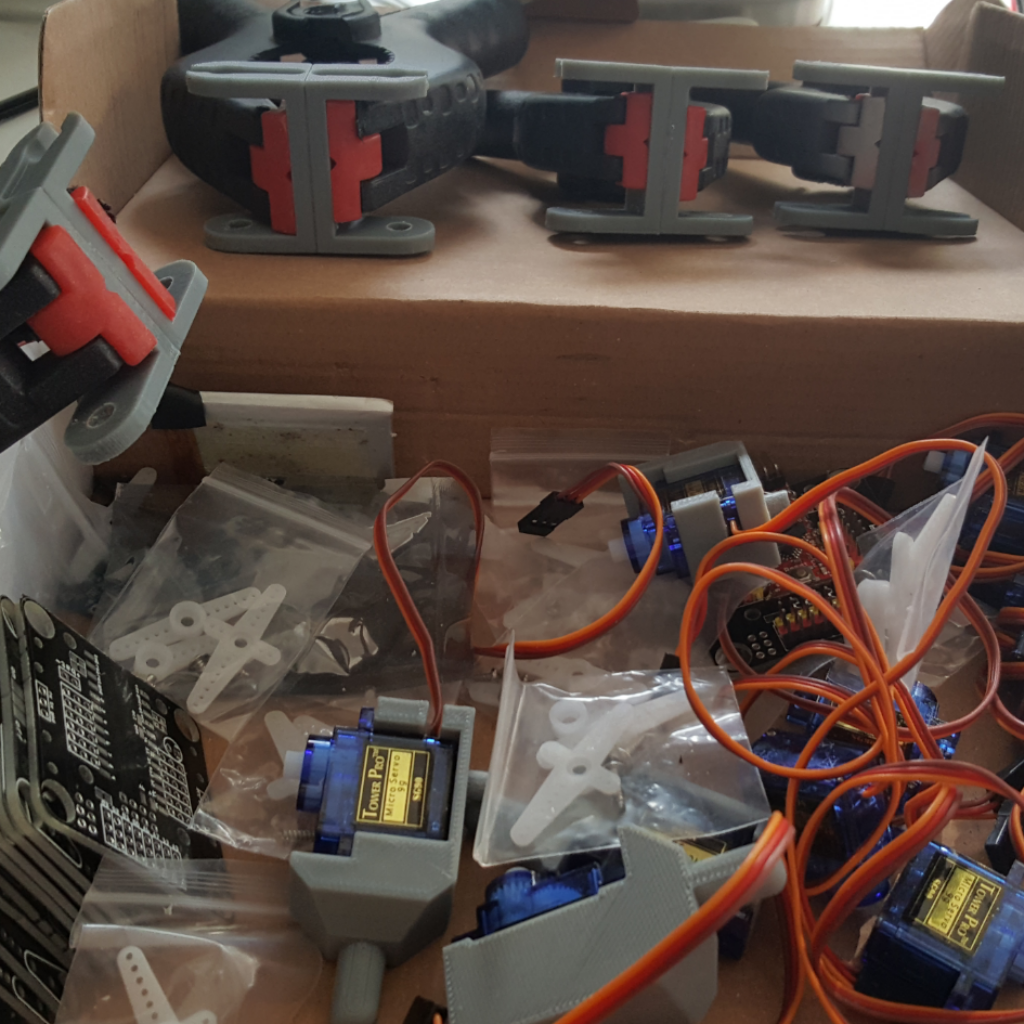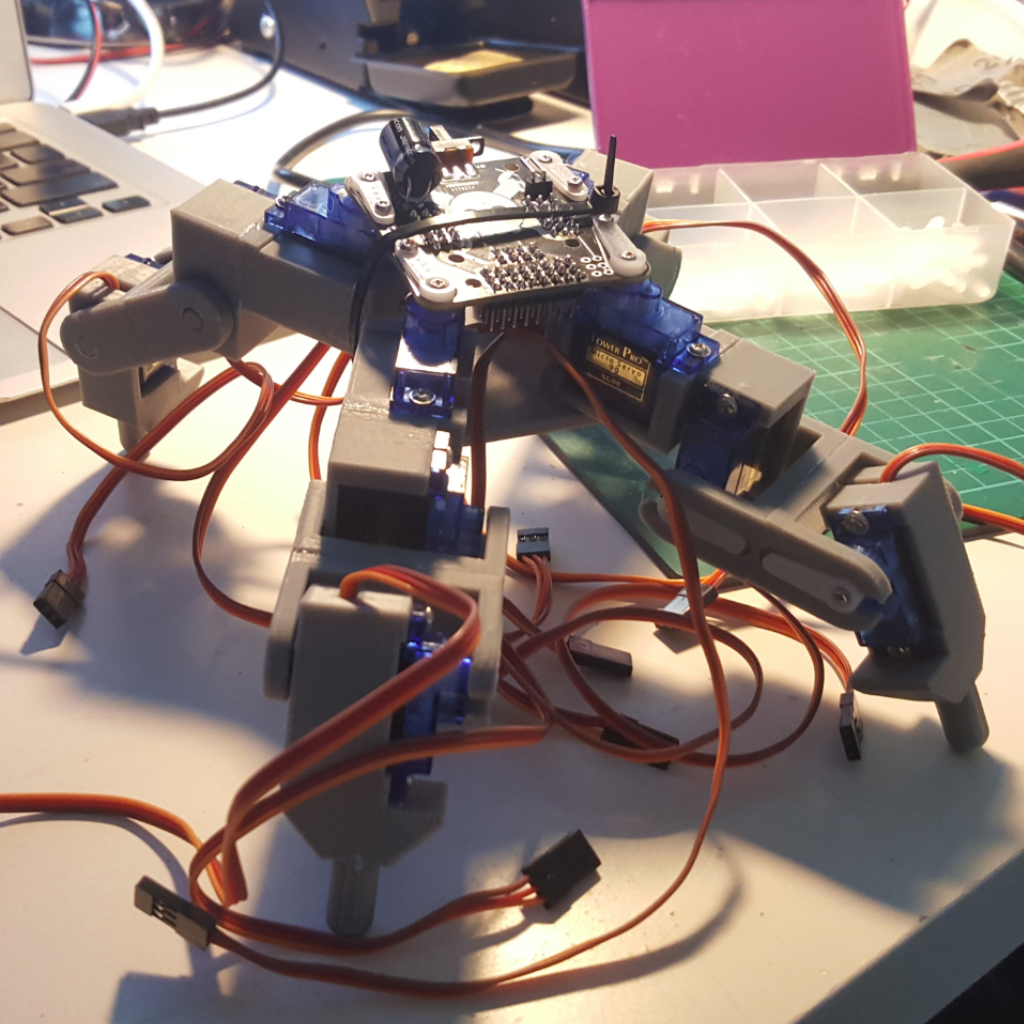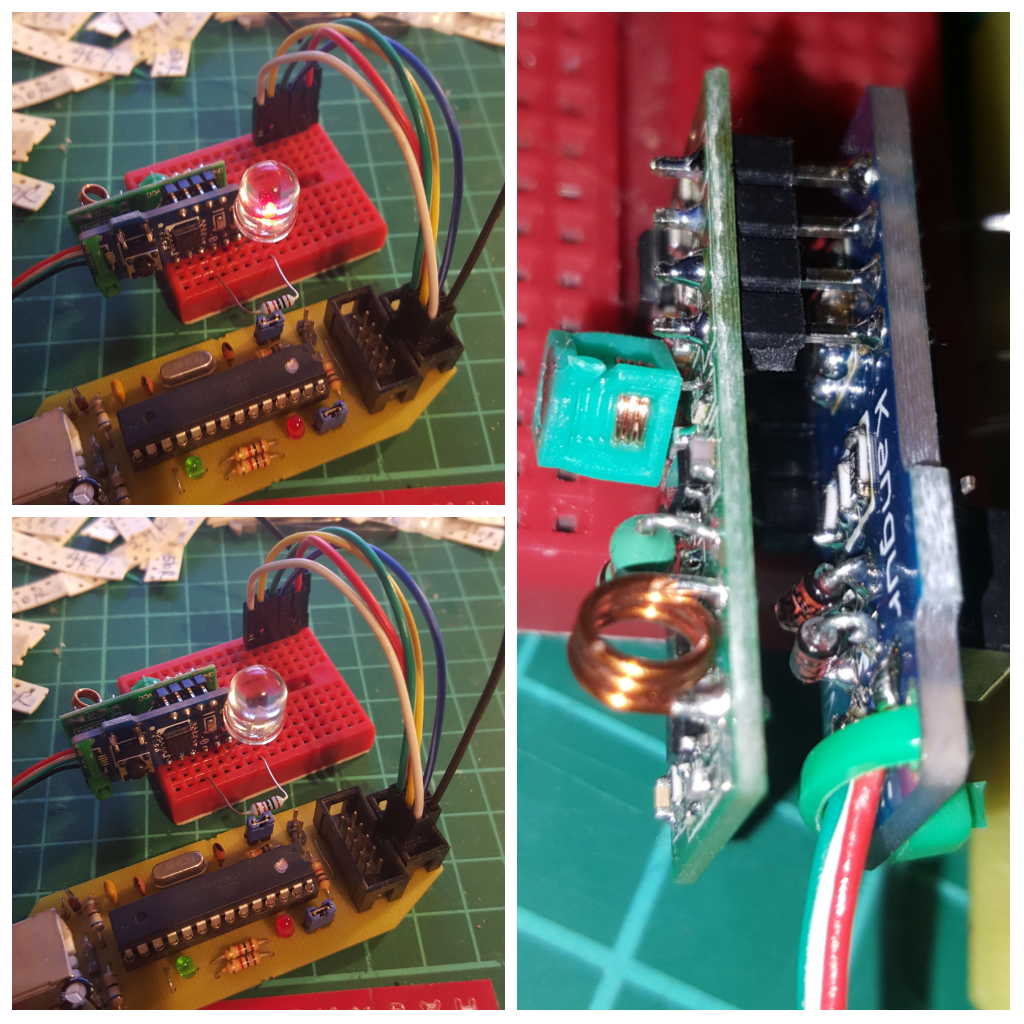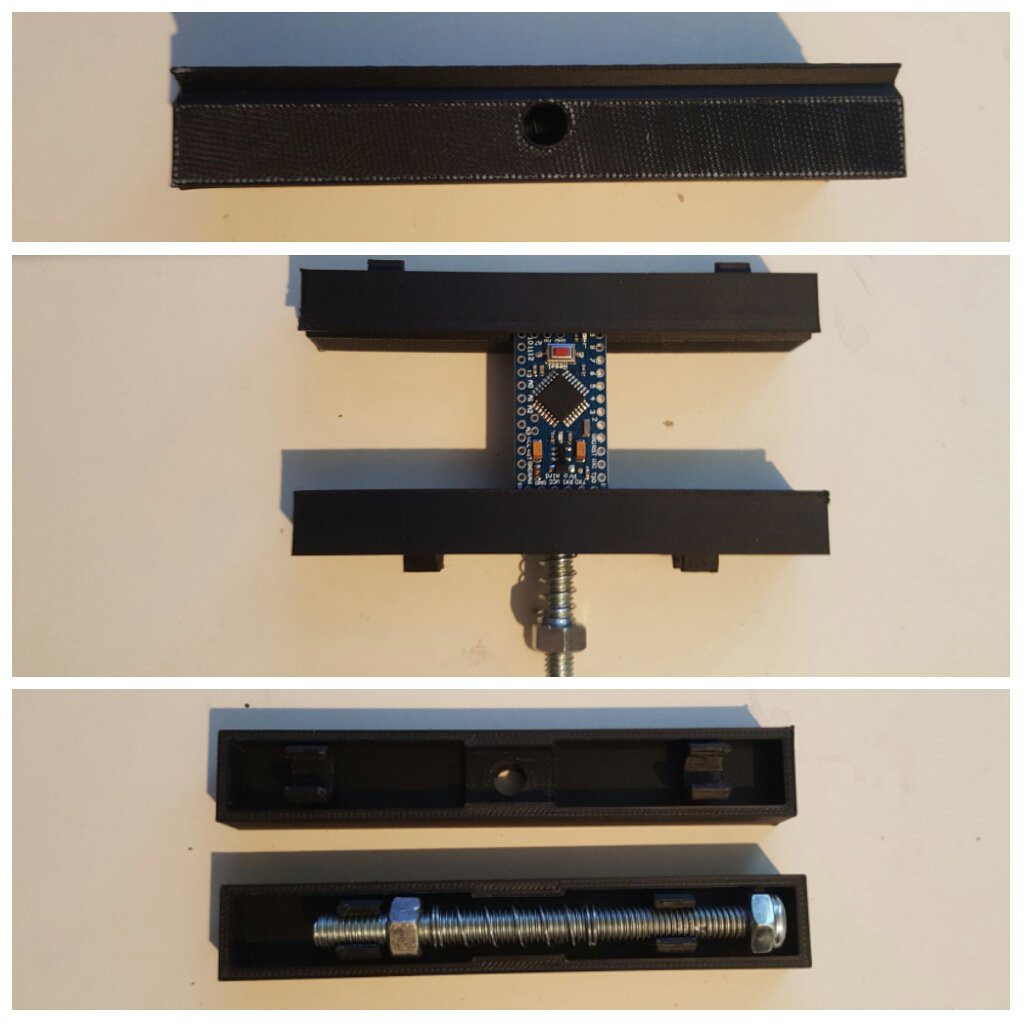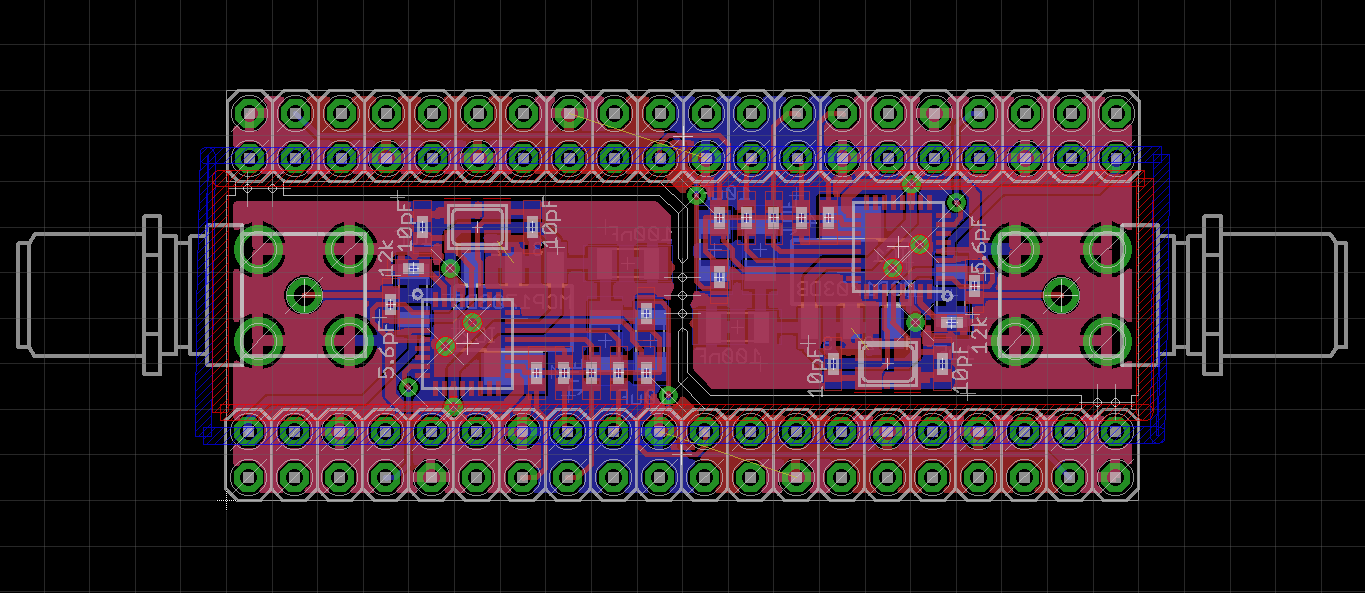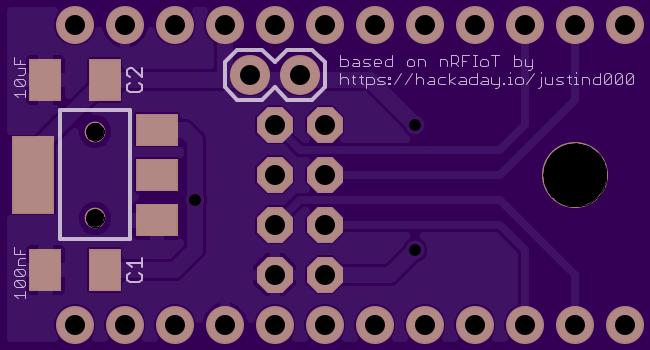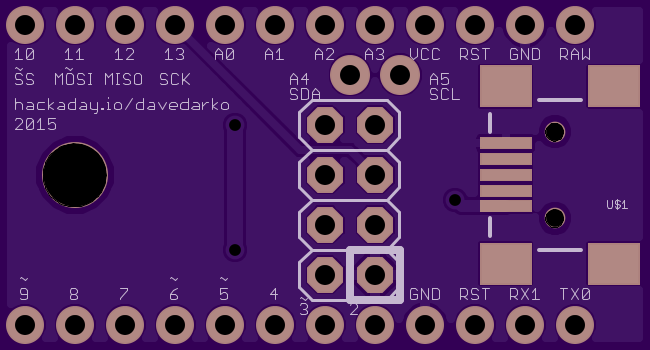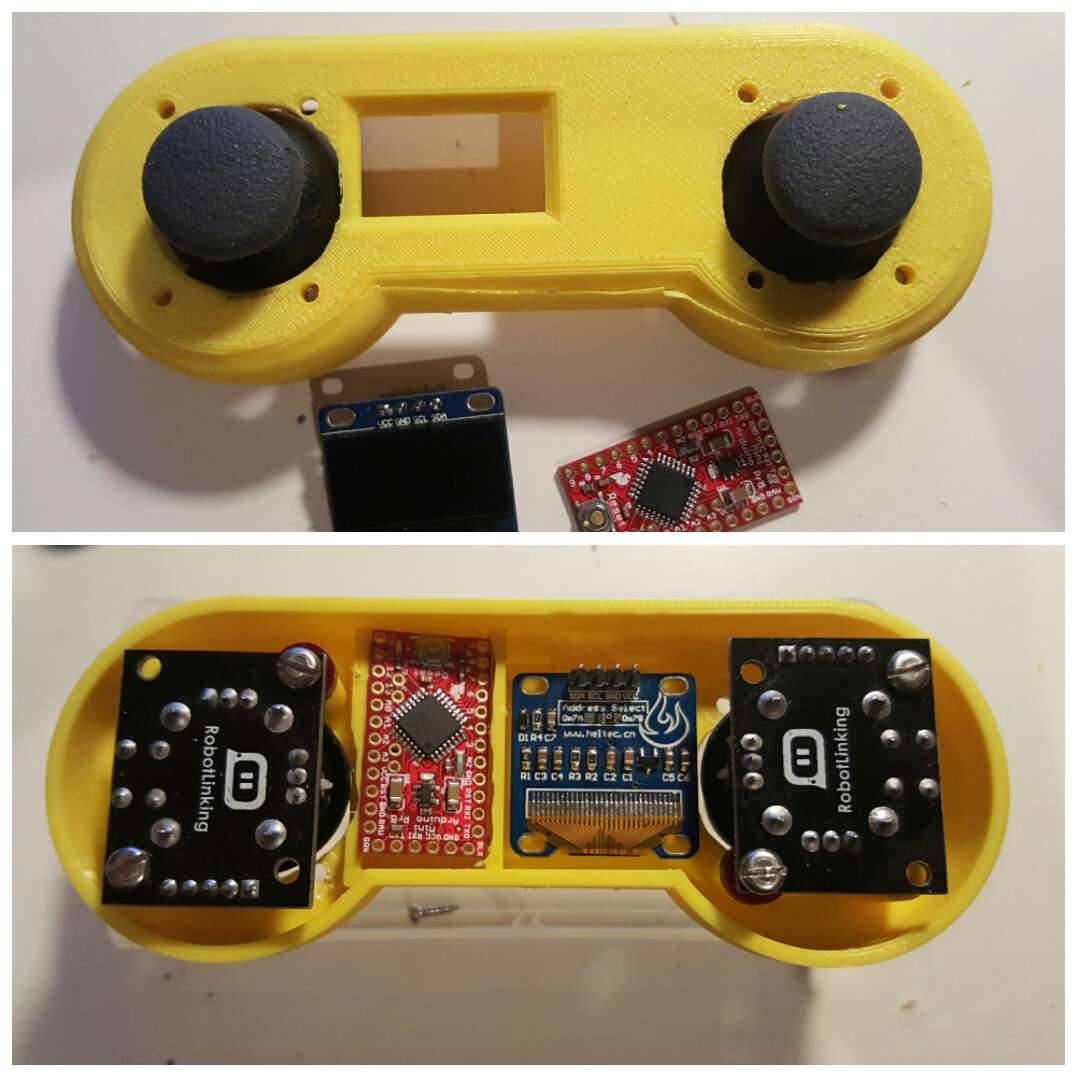-
Supercon 23 badge
10/28/2023 at 21:24 • 1 commentDon't have all parts yet, but enough to get started. I've send two PCBs to @Alex as well - but I have a head start ;)
![]()
We had to figure out some errata ourselves, since we've ordered boards that weren't the final version apparently. The BOM itself is also different now. The MOSFET in our version had to be soldered on in dead-bug style and turned by some degrees.
![]()
The badge worked in the end and I did two small modifications: the simple add-on was powered from the batteries, I changed that to also get 3.3V from the regulator. There was also a good use-case for an additional reset button, so I did that.
![]()
The badge worked great after the latest firmware was pushed on it, very happy with the result!
The 3d printed buttons arrived from JLCPCB, a long with the expander PCB, so this is complete now :)![]()
-
PCB3 - Christmas Tree PCB - by @Brian Lough
12/24/2018 at 06:39 • 0 comments#PCB3 - Christmas Tree PCB - by @Brian Lough
It has been a while that I made an entry here :) I was soldering the kit by Brian last weekend as a present for my Grandparents! Worked quite well, as it uses the same technique as my #PCB word clock - soldering LEDs upside down and shining through the PCB. There are a lot of PCB art trees out there, but this is one of my favorites. Probably because the code was inspired by my #sloth badge and Brian was cool about it and gave a lot of credits on his tindie page ;)
Of course I had to run into troubles while soldering it, a USB breakout board had all the pins connected, so I had to reprint and resolder the base.
![]()
You can download the base designed by @Tobias over here https://twitter.com/Tobi4sDE/status/1073852240287465472?s=19 but be warned, I had to scale it up to 108% on my zortrax 3d printer to make it fit.
-
#RPi WiFi Hat - by @ajlitt (PART 2:FAILFIGHTING)
08/28/2016 at 18:24 • 1 comment#RPi WiFi Hat - by @ajlitt
so I finally came around the other day to try out the boards I've done in Part 1 and follow the detailed instructions https://hackaday.io/project/8678/instructions
As suggested, I also followed the OTG tutorial to control it over just one usb cable from my usb3 port. awesome.
So here it is - PROTIP: don't make shields like that! I tried to debug it for a whole while until I noticed that I had it put in backwards. Now I'm able to ssh via USB into a raspberry and scan for SSIDs and stuff. Nice.
![]()
![]()
-
Tote Had by Radomir Dopieralski
04/02/2016 at 09:42 • 13 comments#Tote HaD by @Radomir Dopieralski
So I've ordered the boards and servos and already soldered a bit, although my free time is rare these months, but I wanted to bring my Tote with me to #Hackaday | Belgrade and code for it a bit. The simplicity of the #Tote is something I really liked and I never had a walking robot before, so this was a thing about to happen. Having a 3D printer at home and loving designing 3D parts I wanted some sturdier looking legs and took some basic servo mounts I designed earlier for #Johnny IV
As soon as the parts are all printed, I will update this post.
![]()
![]()
-
Snail Mail Notifier by Solenoid
03/09/2016 at 21:34 • 2 comments#Snail Mail Notifier by @Solenoid
This is a long time shelfie, because I never had the 0805/0603 parts - and I'm not done yet. I'm just now able to use and program the receiver as a digispark. Rewarding hacking around though. I hope I can get some decoding of weather stations going. This is one of the first boards I got from a member of this community, and I like that very much. And by the way, look at those diodes! And of course, the LED is in backwards 🙈
An interesting link I found, where the digispark is being used as a crude oscilloscope, takes PIN 2 as an input, which is coincidentally the same pin the data goes on the 433MHz.
http://digistump.com/wiki/digispark/tutorials/digiscope
![]()
Bootloader: https://github.com/micronucleus/micronucleus/tree/master/firmware/releases
avrdude -p t85 -c usbasp -B 20 -U efuse:w:0xFE:m avrdude -p t85 -c usbasp -B 20 -U lfuse:w:0xE1:m avrdude -p t85 -c usbasp -B 20 -U hfuse:w:0xDD:m avrdude -p t85 -c usbasp -U flash:w:t85_default.hex:iAnd some cheat sheets, since I always forget:
![]()
![]()
-
Bicycle Drummer by serdef
02/27/2016 at 20:16 • 0 commentsOne of my first projects that I've posted here is my most skulled and at the same time most neglected project - #Open Bicycle Computer - around the time when I posted it, I've checked for other interesting projects around that subject and found serdef's #Bicycle Drummer. It's essentially an arduino controlling a "Dreamblaster S1" board via TTL midi signals, where the speed of a loop is defined by your cycling speed. Sounds awesome - not just the idea but the actual baseline as well! The dreamblaster is build around the SAM2195 chip, which has 127 instruments and the first thing I did was playing a note with every instrument there is. I was disappointed by the steel-drum, but the rest was nice to listen to.
http://www.serdashop.com/waveblaster
What you can see here is a first result of a 'getting to know' session with the board. If you think the same way about my talking speed (too slow) then you might want to check the settings of the player, because you can speed it up to 1.5x and still get along easily :D I'm always tired when filming... meh. I'm sorry.
*DISCLAIMER: because I feel I have to say this, serdef send me this board and the arduino+expansion board kindly to play with it and come up with some projects. I'm happy to do so, because I always wanted to get into midi and this connects well with my music hobby and electronics hobby. It's also cool to switch from blinking to making noises sometimes :D
-
MobileVise by SUF
01/18/2016 at 14:09 • 4 comments#MobileVise - by @SUF
Since I first saw the #Stickvise - low profile soldering vise by @Alex Rich I wanted to have one, but I'm cheap when it comes to pay for a decent tool. When @SUF posted his mobile 3D printed version, I thought I can print that! I found a M6 bolt and two nuts and I finally have something to holt my protoboards and arduinos ;)
![]()
-
RPi WiFi Hat - by ajlitt
12/11/2015 at 12:17 • 8 comments#RPi WiFi Hat - by @ajlitt
[update 2015-03-05] new simplified design based on newest development of @ajlitt
Using an ESP8266 (ESP03) connected to a Raspberry PI over the SDI interface - that just looks too awesome! I still have an ESP03 that doesn't fit my #Ignore this ESP8266 board so I have to try this! If it works, I might be crazy enough to make a pi Hat, since the ESP8266EX does not need that many external parts.
Just for the clicks I'll add a screenshot for a mocked up panelized version of a board that isn't routed or thought through much. I should add a 3.3v converter.
https://www.adafruit.com/images/product-files/2471/0A-ESP8266__Datasheet__EN_v4.3.pdf
https://www.sparkfun.com/products/13231
Oh. I have to sleep on this. If anyone wants to look over it, feel free, would make me happy :) if you have a suggestion, please leave a comment.
https://github.com/davedarko/PIzero
![]()
I panelized the board that is based on ajlitt's latest update, fitted to a 5x5 cm2 board and ordered it at dirtypcbs.com - I went with blue because I thought the ESP12F was blue, but it's actually black. Ah well.
![]()
-
nRFIoT - Easy IoT Sensors by https://hackaday.io/justind000
11/09/2015 at 10:26 • 1 comment#nRFIoT - Easy IoT Sensors by https://hackaday.io/justind000
This is my take on the idea of a nRF24L01 shield for arduino minis. They are cheap like the nRF24 modules and I want to work on a remote for my droids and drones in the future. I used 1206 parts and mini usb because I have a lot of them.
![]()
![]()
![]()
-
R-2R DAC inspired by tiny7 by al1
11/04/2015 at 09:51 • 8 commentsFollowing @Elliot Williams on youtube I noticed his next "logic noise" HaDblog post will feature R-2R DACs and an hour later I had this idea for a little project, using a shift register with some 6.8kOhm resistors I have too many of. Since I really liked the Idea of using the accessible ISP header on arduinos to send data to the shift register like the #tiny7 by @al1 does, I had to put this on a protoboard. Expect some weird sounds to follow, because they are nowhere near to be accurate with 5% tolerance resistors. This just screams for a self checking arduino script that writes data out and checks the output with analog input.
![]()
Me building projects from hackaday.io
This is where I build and talk about projects designed by the great people of this community.
 davedarko
davedarko